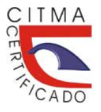Effect of efficient microorganisms (ME-50) on pineapple (Ananas comosus var. comosus) 'MD-2'
Keywords:
Acclimatization, Efficient microorganisms, Morpho-physiological development, PineappleAbstract
Pineapple is a crop of great commercial importance in the world. Micropropagation protocols have allowed the increase of high quality seeds and the accelerated introduction of new varieties. This research was developed in the laboratories and in the acclimatization areas of the Bioplants Center, at the University of Ciego de Ávila Maximo Gomez Baez (41 ° 53´N, 78 ° 41´W, 45 m asl) during the period between the months of March to October 2020. The effect of different ME-50 treatments as foliar fertilizers was determined on the morphophysiological variables behavior of micropropagated pineapple plants (Ananas comosus var. comosus) ‘MD- 2’ during the acclimatization phase. The survival percentage, fresh and dry mass of the plant (g), length of the plant (cm), number of roots, number of leaves, fresh and dry mass of the leaf "D" (g), leaf length "D" (cm), leaf width "D" (cm), fresh and dry root mass (g) and survival were evaluated. The best results were obtained for the 75 ml.L-1 treatment, which increased the morpho-physiological indicators of the pineapple plants ‘MD-2’ during the acclimatization period. The acclimatization stage is important to achieve a good adaptation of the plants to field conditions, the micropropagated pineapple plants (Ananas comosus var. comosus) hybrid ‘MD-2’, have established an acclimatization period and a quality for their transfer to field.
Downloads
References
ALFONSO, D. R., PÉREZ, M. I. y ÁLVAREZ, E. M. (2019). Los recursos fitogenéticos de piña (Ananas comosus var. comosus (L.) Merr.) en Cuba. Revista de Investigaciones de la Universidad Le Cordon Bleu. Vol. 6, No. 2, pp. 27-40.
ARAGON, C. ... [et al.] (2012). The physiology of ex vitro pineapple (Ananas comosus L. Merr. var MD-2) as CAM or C3 is regulated by the environmental conditions. Plant Cell Rep. Vol. 31, No. 4, pp. 757-769. 10.1007/s00299-011-1195-7.
BARTHOLOMEW, D. P., PAUL, R. y ROHRBACH, K. (2003). The Pineapple. Botany, production and uses. Crop Environment, Plant Growth and Physiology. D. P. Bartholomew, R. Paul and K. Rohrbach. Wallingford, UK, CABI. 1: 320.
CALERO-HURTADO, A. ... [et al.] (2019). Influencia de dos bioestimulantes en el comportamiento agrícola del cultivo del tabaco (Nicotiana tabacum L.). Revista de la Facultad de Ciencias. Vol. 8, No. 1, pp. 31-44.
CARR, M. K. V. (2012). The water relations and irrigation requirements of pineapple (Ananas comosus var. comosus): A review. Expl Agric: pp. 1-14. 10.1017/S0014479712000385.
DAQUINTA, M. y BENEGAS, R. (1997). Brief review of tissue culture of pineapple. Newsletter Pineapple International Society Horticultural Sciences. No.3, pp. 7-9.
ESCALONA, M. ... [et al.] (1999). Pineapple (Ananas comosus L. Merr) micropropagation in temporary immersion systems. Plant Cell Reports. Vol. 18, No. 9, pp. 743-748.
FRESCHI, L. ... [et al.] (2009). Thermoperiod affects the diurnal cycle of nitrate reductase expression and activity in pineapple plants by modulating the endogenous levels of cytokinins. Plant Physiol. Vol. 137, No. 3, pp. 201-212. 10.1111/j.1399-3054.2009.01283.x.
GAMBOA, D. M. (2018). Calidad de posturas de Micropholis polita (griseb.) pierre (sapotillo) cultivada en vivero, con la aplicación de microorganismos eficientes y fitomas-e. una alternativa para el desarrollo local. Ciencias Forestales y Ambientales. Vol. 3, No. 2, pp. 150-158.
HERNÁNDEZ MANSILLA, A. A. ...[et al.]. (2011). Hongos y oomycetes fitopatógenos en viveros de piña Ananas comosus (L.) merril en Ciego de Ávila, Cuba. Fitosanidad. Vol. 15, No. 3, pp. 137-142.
LIRIANO GONZÁLEZ, R. ...[et al.]. (2020). Efecto de dos bioproductos sobre algunos indicadores del crecimiento y productividad de Raphanus sativus. Centro Agrícola. Vol. 47, No. 1, pp. 28-37.
LORENTE GONZÁLEZ, G. Y. ... [et al.]. (2018). Foliar fertilization of 'MD-2' pineapple plants (Ananas comosus var. comosus) during the acclimatization phase. Newsletter of the Pineapple Working Group, International Society for Horticultural Science. Vol. 25, No. 1, pp. 13-17.
MARTÍ, P. R. M. ... [et al.] (2014). Efecto de microorganismos eficientes (ME-50) sobre la morfología y el rendimiento del cultivo del arroz (Oryza sativa) en Aguada de Pasajeros. Revista Científica Agroecosistemas. Vol. 2, No. 2, pp. 14-18.
MONTANO, R., VILLA, P. y MOREJON, R. L. Y. E. (2006). FitoMas E. Estimulante de estimulantes. Ciudad de la Habana: ICIDCA, p. 4.
MONTANO, R. ... [et al.] (2007). Fitomas E: Bionutriente derivado de la industria azucarera. ICIDCA. Sobre los derivados de la caña de azúcar. Vol. 41, No. 3, pp. 14-21.
NÁPOLES BORRERO, L. y CID, M. (2019). Instructivo Técnico. Propagación masiva de Piña [(Ananas comosus (L.) Merr.] cv. MD-2 mediante la técnica de cultivo in vitro. Ciego de Ávila, Universidad de Ciego de Ávila.
NERI, J. C. ... [et al.] (2021). Effect of planting density on the agronomic performance and fruit quality of three pineapple cultivars (Ananas comosus L. Merr.). International Journal of Agronomy. Vol. 2021, No. 1, pp.1-7 Disponible en: https://doi.org/10.1155/2021/5559564. Visitado: 25 de enero de 2023.
PAULL, R. E., BARTHOLOMEW, D. P. y CHEN, C. C. (2017). Pineapple breeding and production practices. Handbook of Pineapple Technology: Production, Postharvest Science, Processing and Nutrition. D. P. Bartholomew, Wiley Blackwell: pp.16-38.
PINO LEGRAT, Y. (2014). Nuevas contribuciones al proceso de cultivo ex vitro de vitroplantas de piña (Ananas comosus (L.) Merr.) MD-2 previo al traslado al campo. Tesis Maestria en Agrobiotecnología. Centro de Bioplantas p. 60.
QUINTERO RODRÍGUEZ, E. ... [et al.] (2018). Efecto de diferentes bioestimulantes en el rendimiento del frijol común. Centro Agrícola. Vol. 45, No. 3, pp. 73-80.
REINALDO, J. R. M., CARRAZANA, R. C. y ALMOGUEA, M. (2015). Efecto de los Microorganismos Eficientes (ME) en la producción de posturas de fruta bomba (carica papaya L.) en la Empresa Agropecuaria “Horquita”. Revista Científica Agroecosistemas. Vol. 3, No. 1, pp. 11-16.
RODRÍGUEZ-ESCRIBA, R. C. ... [et al.] (2014). CAM metabolic changes of "MD-2" pineapple grown under high and low light. Newsletter Pineapple International Society Horticultural Sciences. No. 21, pp. 27-34.
RODRÍGUEZ-ESCRIBA, R. C. ... [et al.] (2015). High light intensity increases the CAM expression in “MD-2” micro-propagated pineapple plants at the end of the acclimatization stage. American Journal of Plant Sciences. Vol. 6, No. 19, pp. 3109.
VILLALOBOS, A. ... [et al.] (2012). Morpho-physiological changes in pineapple plantlets [Ananas comosus (L.) Merr.] during acclimatization. Ciência agrotecnologia. No. 36, pp. 624-630.
VILLAR, J., MONTANO, R. y LÓPEZ, R. (2005). Efecto del bioestimulante fitomas E en cultivos seleccionados. ICIDCA. Sobre los Derivados de la Caña de Azúcar. Vol. 39, No. 2, pp. 41-45.
YANES PAZ, E., GONZÁLEZ-OLMEDO, J. y RODRÍGUEZ SÁNCHEZ, R. (2001). Empleo de Giberelinas y fertilización foliar durante la aclimatización de vitroplantas de Piña Cayena Lisa c.v. ¨Serrana¨. Biotecnología vegetal. No.1, (enero-abril), pp. 23-28.
Downloads
Published
Versions
- 2024-03-07 (2)
- 2023-05-25 (1)
How to Cite
Issue
Section
License
Copyright (c) 2023 Universidad & ciencia

This work is licensed under a Creative Commons Attribution-NonCommercial-ShareAlike 4.0 International License.





















